That Fit Friend is supported by its readers. I [Jake Boly] run this site myself and buy the gear I review. If you purchase through my site, I may earn commissions on sales, read more here!
From my clients and through my training shoe reviews, I’m constantly being asked about which shoes are best for leg day. When considering the best shoes for leg day, I think it’s important to break this topic into different performance categories.
If we can better understand how you plan to train in the shoes, then we can select good leg day shoes for the context of your needs. For example, the best leg day shoes for a weathered bodybuilder will generally look different than those for a more beginner recreational lifter.
I like to rotate the shoes that I train in, and if I know I have a heavy leg day coming and I want to wear a certain “type” of shoe, then I’ll be selective with the shoe I wear.
Leg Day Shoes Buying Guide
- Best Training Shoes for Leg Day: Adidas Dropset Trainer 3
- Best Weightlifting Shoes for Leg Day: TYR L-2 Lifter
- Best Barefoot Shoes for Leg Day: Tolos Archetype 2.0
- Best General Shoes for Leg Day: Nike Blazer Mid 77
- Best Flat Shoes for Leg Day: Xero Shoes 360

Best Training Shoes for Leg Day
When considering and testing the best training shoe for leg day I’m focused on two key performance areas. First, I focus on the stability of the shoe and the extent to which you could load the shoe’s midsole without glaring compression, stability, and balance issues.
Second, I’m focused on the shoe’s versatility and who they’ll work best for. Will they be best for recreational lifters who want a training shoe for a bit of everything, just CrossFit, or just leg day?
Top Pick: Adidas Dropset Trainer 3
For heavy leg days, the Adidas Dropset Trainer 3 doesn’t miss. This has been one of my absolute favorite training shoes for sessions where I’m going wicked heavy with squats, single-leg work, and machines.
Sizing and Fit Thoughts
- Narrow (<D) feet: True to size.
- Medium (D) width: True to size.
- E and EE width feet: Go up a half-size.
- 3E+ width feet: Go up a size.
- For More Info: Read My Review
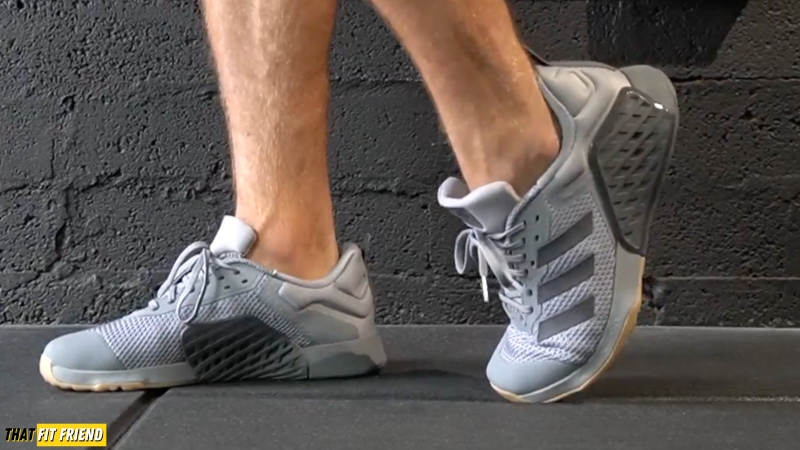
The dual-density midsole gives this model a nice blend of versatility and stability. For context, the forefoot midsole is more pliable, which is great for articulation when doing lunges, and the heel is dense, which is awesome for squats and catching cleans.
I like wider forefoot as well as this gives you more room for toe splay and “feeling” the ground when training. For my E/EE-width feet, I never find this shoe limiting with its fit and width, so wider feet should rejoice with this sizing feature.
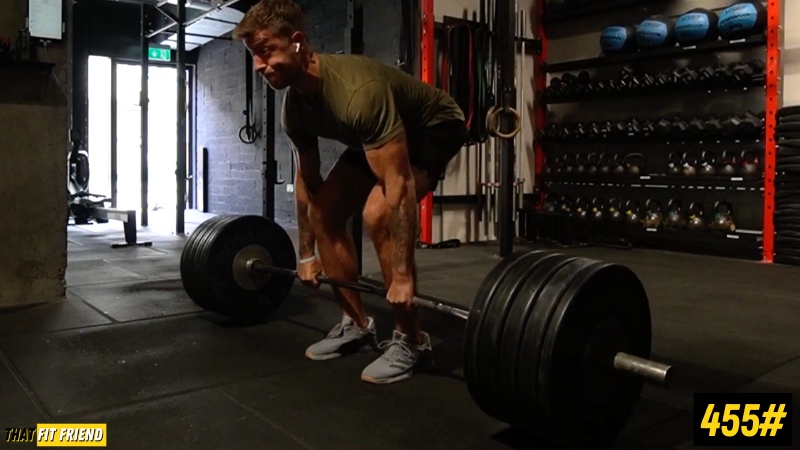
The ventilation through the midsole is another nice perk for keeping this model light when doing athletic-focused sessions. For example, I opt for this shoe when I know I’m hitting heavy leg exercises and then tackling plyos in a PAP-style fashion.
Runner-Up: Nike Metcon 9
Another great training shoe option outside of the Dropset 3 is the Nike Metcon 9. This model delivers a strong level of stability and has multiple construction features to help them excel in CrossFit and cross-training sessions
Sizing and Fit Thoughts
- Narrow (<D) feet: True to size.
- Medium (D) width: True to size.
- E and EE width feet: True to size.
- 3E+ width feet: Go up a half-size.
- For More Info: Read My Review

This model features dual-density foam in its midsole and overall this material gives you a nice level of stability while also being responsive enough for tackling plyometrics, athletic-focused training, and HIIT workouts.
I’ve squatted over 405 lbs in this model without any compression issues and I also like the tread you get on this shoe for training on different surfaces. The outsole grips the floor well and articulates fairly well for unilateral leg day exercises.

I also like the built-in Hyperlift insert in this model and the additional stability it provides in the heel. I think if you’re someone who wants a shoe that works well for leg days, can excel in CrossFit workouts, and enjoy an athletic fit with your shoes, then the Metcon 7 is a good model to look into.
Best Weightlifting Shoes for Leg Day
To assess and test the perfect weightlifting shoes for leg day, I’m primarily focused on how stable a weightlifting shoe is under different weights. Since most lifters will be using their weightlifting shoes for squats, clean & jerks, snatches, and machine work, the shoe needs to be stable and provide a secure foot position.
I’m also concerned with the shoe’s overall durability. Weightlifting shoes can be investments, so having models that last a while can be key for prolonging your investment.
Top Pick: TYR L-2 Lifter
The TYR L-2 Lifter is taking my top pick as the best weightlifting shoe for leg day. This shoe has quickly become one of my go-to weightlifting shoes for heavy squats, cleans, and leg exercises.
Sizing and Fit Thoughts
- Narrow (<D) feet: True to size.
- Medium (D) width: Go up a half-size.
- E and EE width feet: Go up a half-size
- 3E+ width feet: Go up a size & take insole out.
- For More Info: Read My Review

This model’s TPU midsole and heel provide plenty of stability for heavy training sessions so I don’t think you’ll run into stability issues in this model whatsoever.
In addition, this shoe features a wider toe box which is awesome for accommodating toe splay and wider foot anatomies. As of right now, the L-12 Lifter is arguably the widest weightlifting shoe on the market and that’s by a fairly substantial mark — take the insole out for an even more spacious fit.

The midfoot security and upper durability are also solid in this shoe. I have yet to run into issues with either component while training so for general leg days the L-1 Lifter should last you plenty long for your investment.
Runner-Up: Reebok Legacy Lifter III
My second weightlifting shoe for leg days is the Reebok Legacy Lifter III. I’ve completed multiple squat and clean PRs in this shoe and it has yet to let me down.
Sizing and Fit Thoughts
- Narrow (<D) feet: True to size.
- Medium (D) width: Go up a half-size.
- E and EE width feet: Go up a half-size
- 3E+ width feet: Go up a size & take insole out.
- For More Info: Read My Review

The heel in this shoe comes in at .86″ and is made with a durable TPU. I like this heel height for a variety of lifters and think they’ll work with a wide range of anatomies and ankle mobilities.
The upper construction of this shoe is also fairly durable. I have yet to run into breakdown issues in my model and have used them for countless leg day and squat sessions. I think your investment will last with this weightlifting shoe if you take care of them.

The midfoot security in this shoe is also solid for anyone who plans to use these shoes for different types of leg days and for tackling movements like clean & jerks and snatches. This shoe locks down the feet well.
Best Barefoot Shoes for Leg Day
When considering the best barefoot shoes for lifting and more specifically leg day, I have two performance criteria I’m assessing. First, I’m looking at the outsole and the tread it provides on different surfaces.
Second, I’m concerned with the shoe’s overall durability. Since barefoot shoes can be so minimal, I want to make sure the upper and sole can both withstand the stress that generally comes along with different leg days.
Top Pick: Tolos Archetype 2
My favorite barefoot shoe for leg day (and deadlift day) is the Tolos Archetype 2.0. This model has been solid across the board for every leg day that I’ve thrown at them and I find myself constantly reaching for them in my gym bag.
Sizing and Fit Thoughts
- Narrow (<D) feet: True to size.
- Medium (D) width: True to size.
- E and EE width feet: True to size.
- 3E+ width feet: Go up a half-size.
- For More Info: Read My Review

The sole construction is minimal and it articulates well for leg days. If you want maximal ground contact when training, then this model will work for your training needs and it has adequate traction.
I also like the width of the toe box how easy it is to splay the toes and how well the sole moves when tackling both static and dynamic leg exercises. I’ll use the Archetype 2 most for accessory leg exercises and for lifts where I have active foot and lower body muscle-bias exercises program.

If you’re looking for a consistent barefoot shoe that works well for leg days and looks good for daily wear for a fair price, the Archetype 2 is a good barefoot shoe to look into.
Runner-Up: Inov8 Bare XF
Another great barefoot shoe for leg days is the Bare XF from Inov8. I like this model a lot for leg day training for three key reasons. First, the Bare XF is a good hybrid training barefoot shoe.
Sizing and Fit Thoughts
- Narrow (<D) feet: True to size.
- Medium (D) width: True to size.
- E and EE width feet: True to size.
- 3E+ width feet: Go up a half-size.
- For More Info: Read My Review
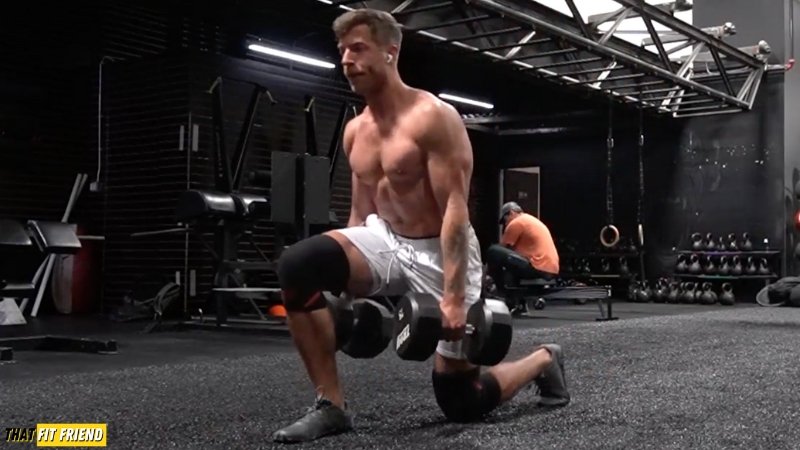
If you’re someone who likes to blend leg day exercises with things like sprints and agility work and you want a barefoot shoe for tackling your workouts, then you’ll enjoy this shoe’s performance.
Second, I like the outsole and removable sockliner in this model. The outsole grips the floor well in gyms and it excels for outdoor workouts and running. The removable sockliner is also nice for providing you with some variance in how much “cushion” these shoes will provide.

Third, this shoe has Inov8’s removable BOOMERANG insole, which is awesome for beginners getting into barefoot shoes. This extra cushion will give you a little comfort and support without taking away from the barefoot shoe feel you’re after.
Best General Shoes for Leg Day
When it comes to general shoes for leg day, I’m most interested in how dynamic a shoe can be. A good general shoe needs to possess the capabilities of performing strongly for heavy leg days while also looking good daily.
These are shoes that may not necessarily be marketed as “leg day” only shoes but can work in this context well for a variety of lifters.
Top Pick: Nike Blazer Mid ’77 Vintage
My top pick for a general shoe for leg day is the Nike Blazer Mid ’77 Vintage (note the regular Blazer Mid ’77 also works well here). This model takes my top pick over more traditional general shoes like Converse for three key reasons.
Sizing and Fit Thoughts
- Narrow (<D) feet: True to size.
- Medium (D) width: True to size.
- E and EE width feet: Go up a half-size.
- 3E+ width feet: Pass on these.
- For More Info: Read My Review

First, the sole of the Nike Blazer Mid ’77 has a good amount of maneuverability to it. Despite being a mid-top shoe, this shoe’s sole articulates well and never feels stiff when performing movements like lunges where you want the shoe’s sole to be pliable.
Second, the outsole tread provides a nice amount of grip on different surfaces. This shoe features a full rubber outsole with a herringbone tread pattern. You never run into slippage issues on turf, rubber gym floor, or wooden platforms in this model.

Third and lastly, it looks stylish and the upper construction is pretty durable. The upper on this model features leather and synthetic materials and this shoe is easy to wear out and about with multiple outfits.
Runner-Up: 2. Vans Sk8-Hi
The Vans Sk8-Hi is another great general shoe that works well for leg days. I like this model most for recreational lifting and for beginners wanting a fairly cost-efficient daily wear shoe that they can also train legs in.
Sizing and Fit Thoughts
- Narrow (<D) feet: True to size.
- Medium (D) width: True to size.
- E and EE width feet: Go up a half-size.
- 3E+ width feet: Pass on these.
- For More Info: Read My Review
This shoe has two key features that make it great for leg day. First, they have a stable rubber sole so they work well for accommodating a variety of loads and lifting needs.
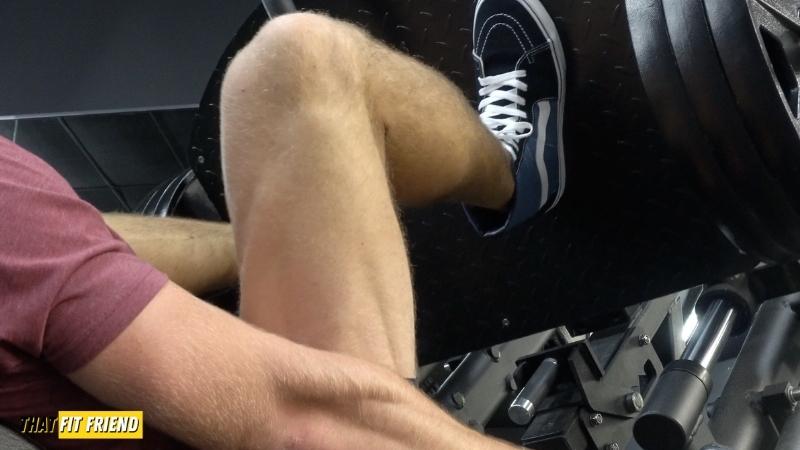
Second, this shoe also features Vans’ signature waffle tread pattern. This tread provides ample grip on a variety of surfaces since it’s technically designed for skateboarding and it has a good amount of durability so it should last you a while.
Another added bonus is that the Vans Sk8-Hi looks great for daily wear. The upper is durable in this shoe and it features the classic Vans branding that many enjoy.
Best Flat Shoes for Leg Day
When considering flat shoes for leg day, I have two main criteria that I consider. First, I look at the model’s heel-to-toe drop to ensure the model is truly flat for anyone that wants a 0mm heel-to-toe drop.
Second, I consider the shoe’s midsole and outsole and how they influence stability in different contexts. Will the shoe work well for heavy squats, machine work, and free-weight exercises?
Top Pick: Xero Shoes 360
The Xero Shoes 360 is one of those shoes that slowly earns your love over time. This shoe, along with the Tolos option above, is one of my failsafe recommendations for anyone coming into my shoe store wanting an easy option for a flat feet when training.
Sizing and Fit Thoughts
- Narrow (<D) feet: True to size.
- Medium (D) width: True to size.
- E and EE width feet: True to size.
- 3E+ width feet: Go up a half-size.
- For More Info: Read My Review
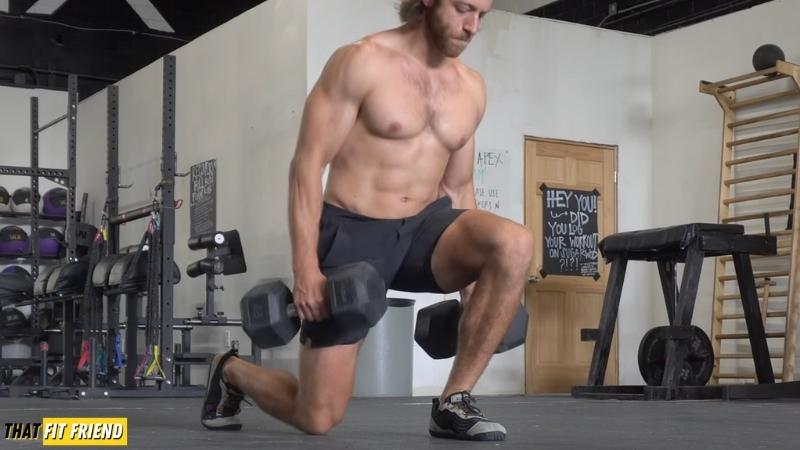
This shoe can be great for anyone who likes to vary their lower body training regularly and also wants to cross-train during their sessions. For example, if you’re hitting lunges, then doing explosive single-leg work, these can work great.
The wider toe box and sole articulation are awesome for single-leg work and giving you additional stability and balance when hitting squats. For newer lifters, keep in mind that these have a low stack height, so you’ll get a lot of ground feel when wearing these.
If you want a little more stack height, AKA material between the foot and the floor, then go for something like the Adidas The Total, Converse (below), or a Vans Sk8-Hi.
Runner-Up: Converse Chuck Taylor All-Star
If you’re looking for a tried and true flatter leg day shoe, then the Converse Chuck Taylor All-Star is a good model to look into. This shoe has been used by countless lifters over the years due to its relatively flat construction and stability.
Pro Tip: Take out its insole when training for a true zero-drop construction and more ground feel.
Sizing and Fit Thoughts
- Narrow (<D) feet: True to size.
- Medium (D) width: True to size.
- E and EE width feet: Go up a half-size.
- 3E+ width feet: Pass on these.
- For More Info: Read My Review
The Converse Chuck Taylor All-Star has a 0mm heel-to-toe drop and its sole is built with a rubber material that does a fairly good job at resisting compression during heavy leg day sessions.

I also like that the price point for the Converse Chuck Taylor All-Star is pretty fair and that they can be worn on a casual basis. Since Nike about Converse, they’ve made the insole in this shoe slightly softer which gives this shoe a better “all-day” feel for recreational lifters that want to wear them outside of the gym.
I’ve competed in powerlifting with Converse Chuck Taylor All-Star high-top shoes before and they performed well. The only caveat with Converse is that their sizing can be a little limiting for lifters with wider feet.
What Shoes Are Best for Leg Day?
The ideal shoes for leg day will be shoes that align with your leg day goals. Duh, Jake, but what does that mean? Whether you’re tackling barbell squats, other free-weight leg exercises, or machine work, you’ll want to find leg day footwear that works well with your lifting mechanics and your anatomy.
When considering great leg day-focused shoes, I consider three key construction characteristics that can all influence a shoe’s performance for various leg day exercises and workouts.
1. Outsole Traction and Material
For leg day, you’ll generally want a shoe that has an outsole that offers a high amount of traction. I generally recommend looking for shoes with full or almost full rubber outsoles.

Rubber outsoles will provide higher amounts of traction across different surfaces. Traction is essential for pretty much every leg day exercise including things like barbell squats, leg presses, lunges, and split squats.
With more traction, you’ll have less slippage in different training settings and your shoe’s durability will increase because the rubber outsole will help protect the midsole from early breakdown.

2. Midsole Material and Stability
In addition to a shoe’s outsole, considering the midsole and its material can also be a crucial construction trait to consider. This aspect is important because different midsoles will provide different amounts of stability.
Stability in your shoe can be important as the weight gets heavier in your leg day exercises. This is why I always recommend not squatting in running shoes that feature thick foam midsoles.

With heavier leg days, you’ll want to find shoes with denser midsole materials. As a general rule of thumb, if you’re using cross-training shoes for squats, look for medium to high-density midsole foams.
3. Heel-to-Toe Drop and Your Needs
The last aspect that I consider is the heel-to-toe drop, also referred to as offset, of the shoe. A shoe’s heel-to-toe drop is defined as the difference in height between where your heel and forefoot sit in a shoe.
Different heel-to-toe drops can influence lifting mechanics, and the heel-to-toe drop that you use should be reflective of your individual training needs and wants.

This is where experimenting with different heel-to-toe drops in shoes and cross-referencing what you prefer for certain exercises and workouts is important.
There is no “one-size-fits-all” heel-to-toe drop that is superior to other drops. The heel-to-toe that you use and prefer should be individual and align with your anatomical needs and training goals.
Why Flat Shoes for Leg Day?
Flat shoes are often thought to be better for leg day because they provide a flat surface to lift on, but that statement needs a little more context. In the context of leg days, can flat shoes be useful for some lifters absolutely? Yes. However, they’re not necessarily a must or the best footwear option for everyone.
For example, let’s say you’re a taller lifter who has some ankle mobility constraints and you want a good pair of shoes for squats and you’re considering a flat shoe, a cross-training shoe, and a pair of weightlifting shoes.

In this context, a pair of flat shoes may not be the best leg day option for you because when squatting in them, you’ll need a level of ankle mobility you may not possess.
For this example, a pair of cross-training shoes or weightlifting shoes with a higher heel-to-toe drop would be better options due to how they’ll assist your squat performance.
Another good example here would be if you want to create a quad bias with free weights or when using machines. To do this, we’ll want to get your knee to track further over the toes to create a greater stretch and demand on the quads.
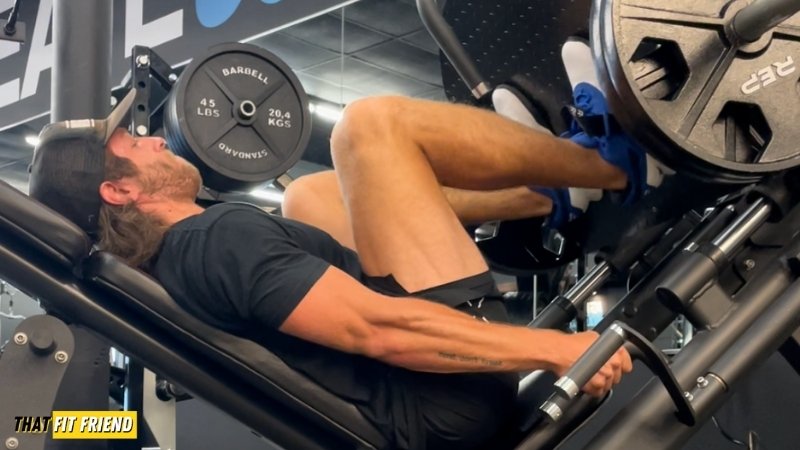
With a shoe with a slightly higher heel-to-toe drop, we can better do this due to how that shoe will feed into our lower body mechanics. A slightly higher heel will put the foot into a plantarflexed position, to begin with, which can then create a better environment for allowing the knees to track.
All this being said, there needs to be more context applied to the idea that a “flat shoe is always better for leg days and training”. They can certainly be useful for some lifters, but they also may not align with everyone’s lifting mechanics and anatomical needs.

From a coaching perspective, my advice here is to experiment with different types of footwear for different exercises and styles of training. By doing this, you can better assess which shoes will assist your performance best when working towards your leg day goals and have the right tools for the job.
As a personal example, I’ll use weightlifting shoes for barbell squat variations and quad-biased exercises, then flatter shoes or cross-training shoes for accessory work, depending on the style of leg exercises I have programmed.
Takeaway Thoughts
When tackling leg day and lower body training, having the right shoes can help with performance. As you get more niche and serious with your leg day training, the importance of a pair of shoes increases.
We all train differently, and we have different leg day goals. If you can identify how you plan to train most often in your shoes, you can make the best choice based on your leg day needs.
If you have questions on any of the shoes featured in this article, drop a comment below or reach out to me personally via Instagram (@jake_boly and @that_fit_friend)!

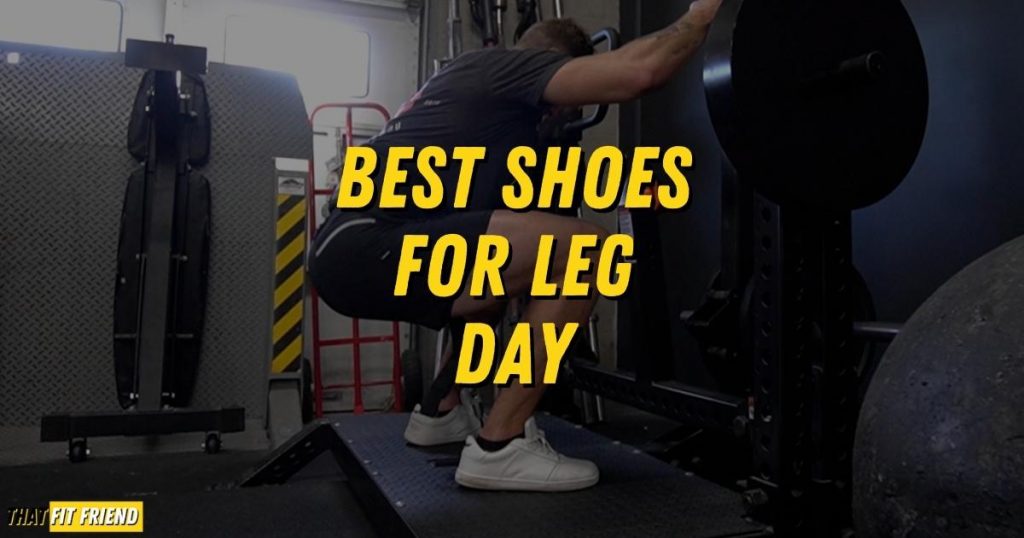
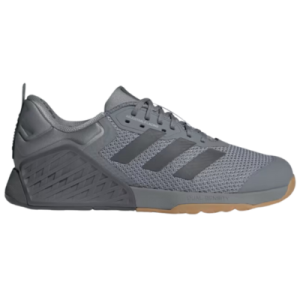

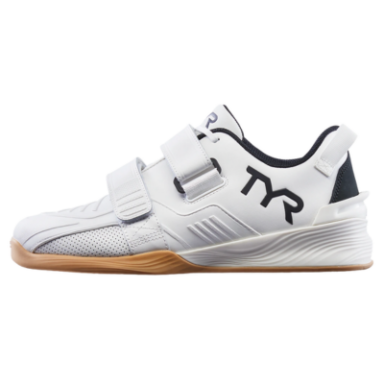

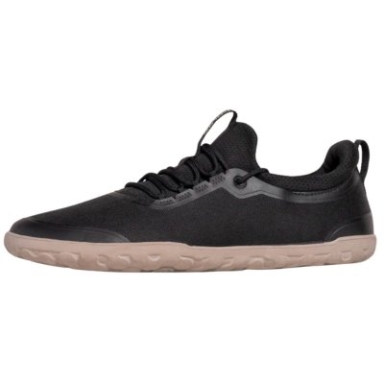
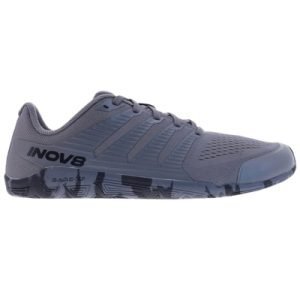







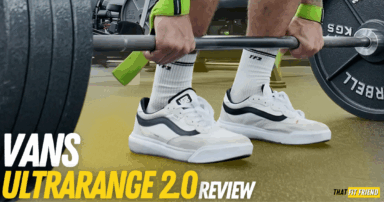

Add a Comment